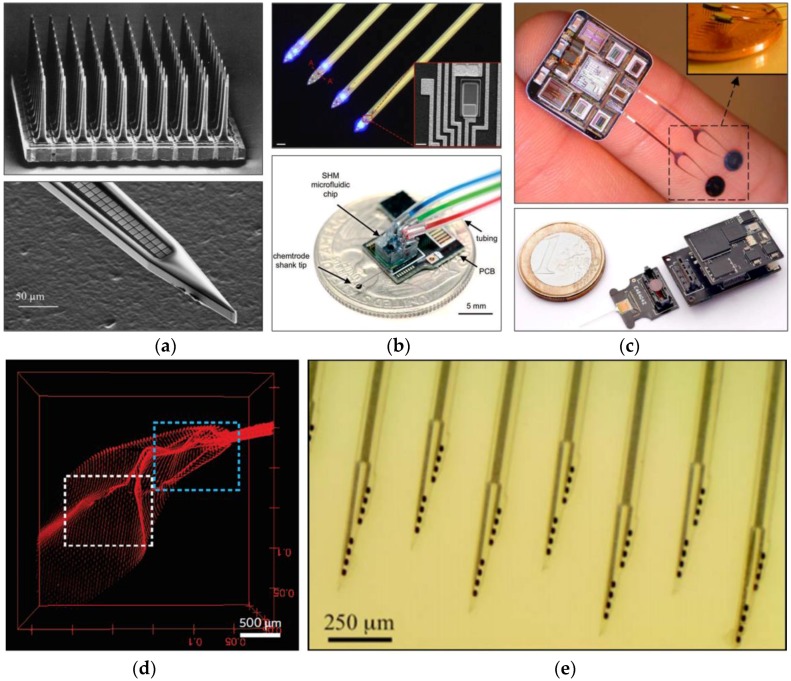Figure 2.
Optical photographs of the state-of-the-art neural probes: (a) high density (top: 3D array from Normann et al. [24]; bottom: 200-electrode shank from Scholvin et al. [17]); (b) functionalities (top: micro-LED for optogenetics from Wu et al. [13]; bottom: mixer-integrated microfluidic channel for drug delivery from Shin et al. [11]); (c) integrated circuits (top: a 64-channel integrated circuit (IC) with wireless transmission from Sodagra et al. [19]; bottom: a 52-channel IC from Lopez et al. [18]), and (d-e) biocompatibility ((d): syringe-injectable flexible 3D probe from Liu et al. [62]; (e): dissolvable silk-coated probe from Wu et al. [35]). Standard neural probes consist of single or multiple shanks and microelectrode arrays integrated at the end of the shanks for neural recording; The syringe-injectable probe shown in (d) is a new type of neural probe which provides 3D access to the brain with minimal damage. All figures reprinted with permission.

